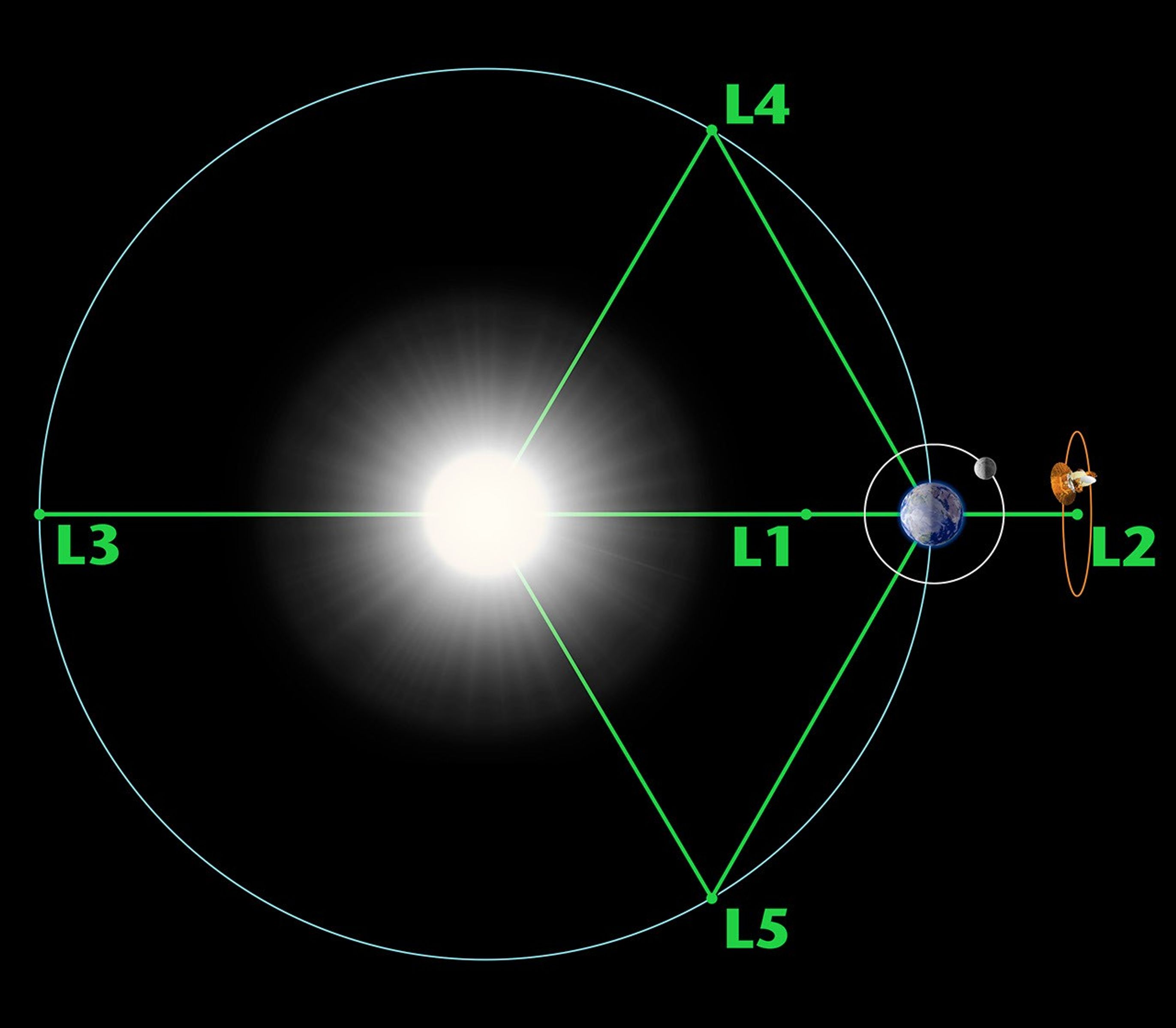Lagrange points
About
- Lagrange points are positions in space where objects sent there tend to stay put. At Lagrange points, the gravitational pull of two large masses ( like the Sun and the Earth) precisely equals the centripetal force required for a small object to move with them.
- These points in space can be used by spacecraft to reduce fuel consumption needed to remain in position.
- There are five such points in the Sun-Earth system and they are denoted as L1, L2, L3, L4 and L5.

- Of the five Lagrange points, three are unstable and two are stable.
- The unstable Lagrange points – labeled L1, L2 and L3 – lie along the line connecting the two large masses.
- The stable Lagrange points – labeled L4 and L5 – form the apex of two equilateral triangles that have the large masses at their vertices. L4 leads the orbit of earth and L5 follows.
Significance of every lagrange points
- L1 point of the Earth-Sun system affords an uninterrupted view of the sun.
- L2 point is ideal for astronomy because a spacecraft is close enough to readily communicate with Earth, can keep Sun, Earth and Moon behind the spacecraft for solar power and (with appropriate shielding) provides a clear view of deep space for our telescopes.
- The L1 and L2 points are unstable on a time scale of approximately 23 days, which requires satellites orbiting these positions to undergo regular course and attitude corrections.
- L4 and L5 points are home to stable orbits. Objects found orbiting at the L4 and L5 points are often called Trojans.
- Significance of the L3 point is still unknown because it stands behind the sun.
Subscribe
Login
0 Comments
